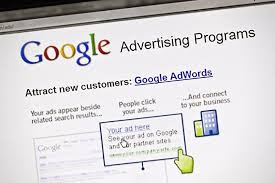Google Adwords CPC - Introduction
Google Adwords or CPC or PPC:
KEYWORD RESEARCH:
Digital Marketing can be done through Organic/free listing OR through paid listings i.e CPC. For this we need to perform Keyword research.
This is done in Google Adwords which is an online advertising service developed by Google.
**After signing in Google Adwords, carefully select the Email, Time zone, Country and currency as you will not be able to change them after selection.
**After signing in Google Adwords, carefully select the Email, Time zone, Country and currency as you will not be able to change them after selection.
In the tools icon, find keywords which can be words, phrases
or URL of website or business.
Select specific keywords with Maximum search volume. Note
their Minimum and Maximum Bid amount.
CAMPAIGN NAME---AD GROUP –ADS AND KEY WORD LIST
CPC: is Cost per
Click:
CPC is the short form of Cost per click, when you pay for
each click on your Ads in your marketing campaign.
TYPES OF CPC:
1. MANUAL CPC
2. MAXIMIZE CLICKS
3. ECPC (ENHANCED CLICKS)
1. MANUAL CPC:
With Manual cost per click (CPC) bidding, you can set a
maximum price on cost of someone clicking on your Ad Words ads.
EXAMPLE: If you
think its worth Rs. 19 to have someone visit your website, you can set Rs. 19/-
as your maximum CPC. You will pay a maximum of Rs. 19/- when a person reads
your ad and clicks it, and you pay nothing if they don’t click.
Lets say you create a text ad and set a max. CPC bif of
Rs. 19. If 500 people see the ad and only 23 of them click to learn more, then
you nd up paying only for 23 clikcs. Your max CPC big was Rs. 19 so you will
payu no more then 23 clicks X 19.
Often you'll pay less than your max. CPC because with the
AdWords auction, the most you'll pay is what's minimally required to hold your
ad position and any ad formats shown with your ad, such as sitelinks.
II. Maximize Clicks:
Maximize clicks automatically sets your bids to help
get as many clicks as possible within your budget.
You set a target daily budget and the AdWords system
automatically sets your maximum cost-per click (CPC) bids on your behalf,
with the goal of getting you the most clicks possible within that
budget.
III. Enhanced cost-per-click (ECPC):
It automatically adjusts your manual bids to help you get
more conversions, while trying to achieve the same cost-per-conversion.
ECPC is available as an optional feature with Manual CPC
bidding.
With ECPC, you'll still have control over your bids just
like you did before, but ECPC helps you by adjusting each bid based on how
likely it is that a click will result in a conversion. If a click seems likely
to convert, ECPC will raise your max CPC (after applying any bid
adjustments you've set).
So just to recap:
MANUAL CPC = MANUAL BIDS
MAXIMIZE CLICKS = AUTOMATIC BIDS
ECPC = AUTOMATICALLY RAISE YOUR MANUAL BIDS





